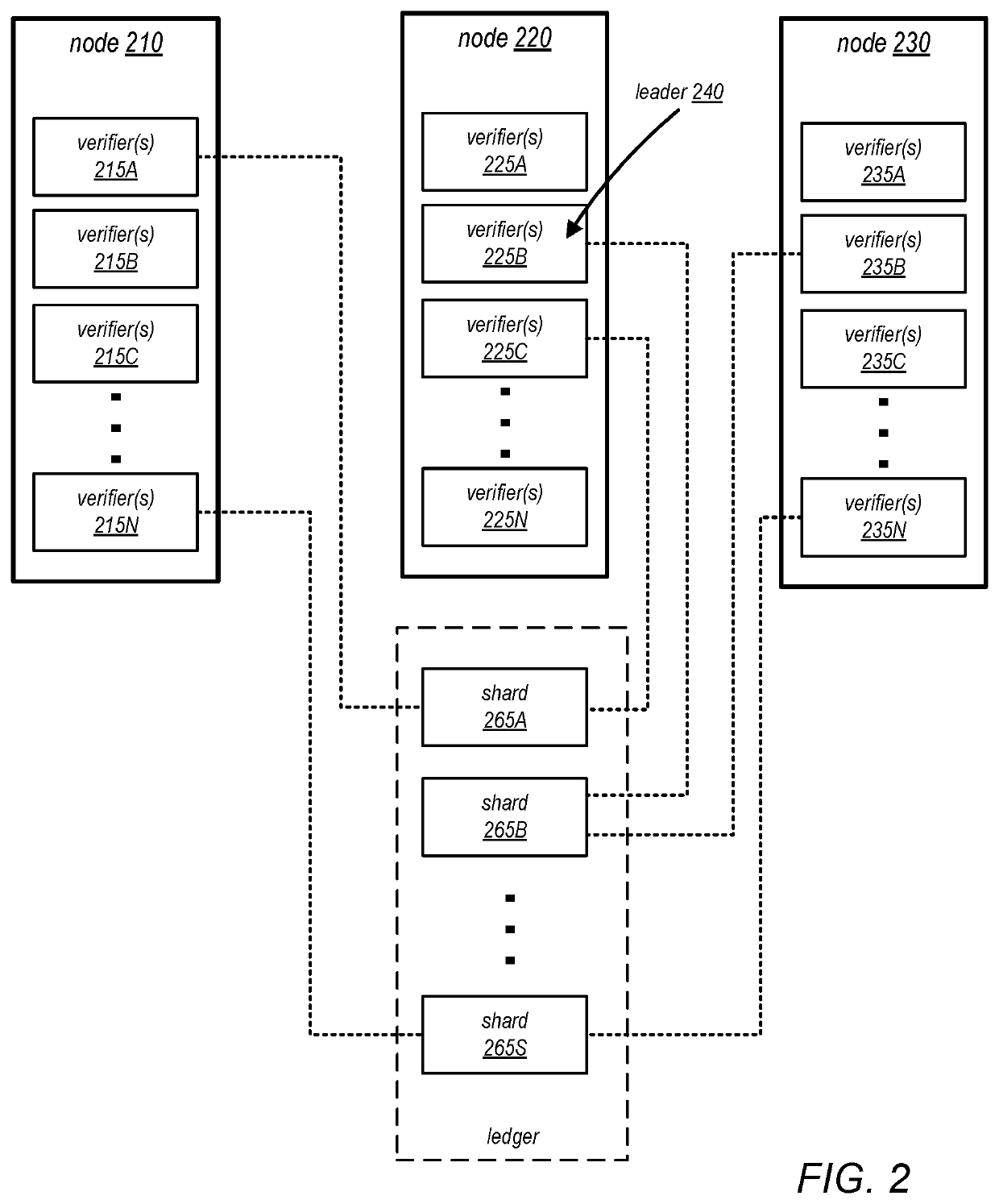Sharded permissioned distributed ledgers
a distributed ledger and permission technology, applied in the field of distributed ledgers, can solve the problems of insufficient additional resources, inability to scale well, and inability to achieve the effect of improving throughput,
- Summary
- Abstract
- Description
- Claims
- Application Information
AI Technical Summary
Benefits of technology
Problems solved by technology
Method used
Image
Examples
Embodiment Construction
[0024]Methods, techniques, apparatus and systems for implementing sharded, permissioned, distributed ledger systems are described. In some embodiments, sharded, permissioned, distributed ledgers may reduce the amount of work and communication required by each participant, thus possibly avoiding scalability bottlenecks inherent in previous distributed ledger implementations and enabling the use of additional resources thereby possibly increasing throughput.
[0025]In monolithic ledgers (e.g., Bitcoin™ as one example), transactions in the ledger are arranged in a single linear sequence. As a result, monolithic ledgers are generally inherently sequential: every node proposing to add a new transaction to the ledger must compete with every other such node by participating in a common consensus protocol, and the overall system throughput and latency tends to suffer as the number of participants increases.
[0026]By contrast, in a sharded ledger, the single ledger may be split into a collectio...
PUM
 Login to view more
Login to view more Abstract
Description
Claims
Application Information
 Login to view more
Login to view more - R&D Engineer
- R&D Manager
- IP Professional
- Industry Leading Data Capabilities
- Powerful AI technology
- Patent DNA Extraction
Browse by: Latest US Patents, China's latest patents, Technical Efficacy Thesaurus, Application Domain, Technology Topic.
© 2024 PatSnap. All rights reserved.Legal|Privacy policy|Modern Slavery Act Transparency Statement|Sitemap



